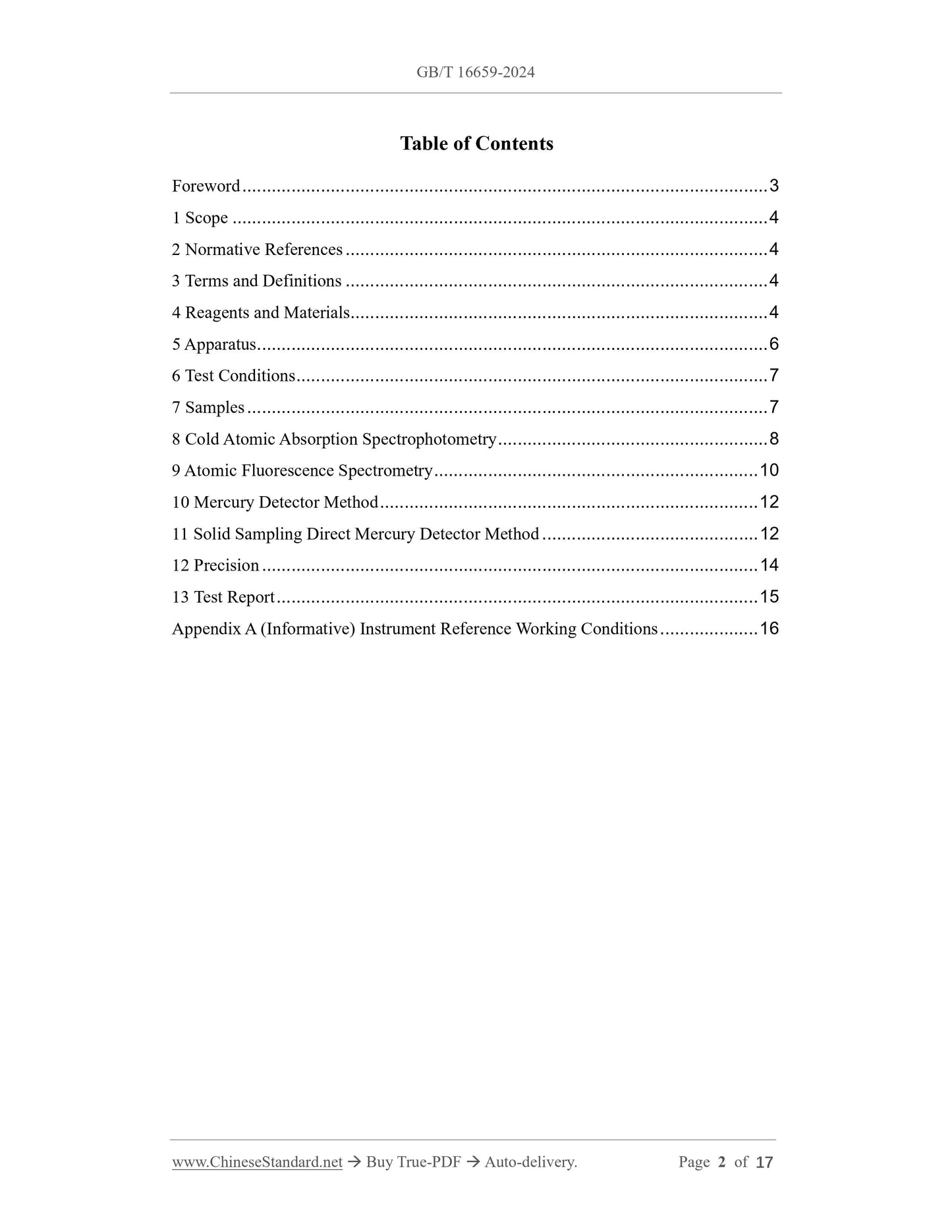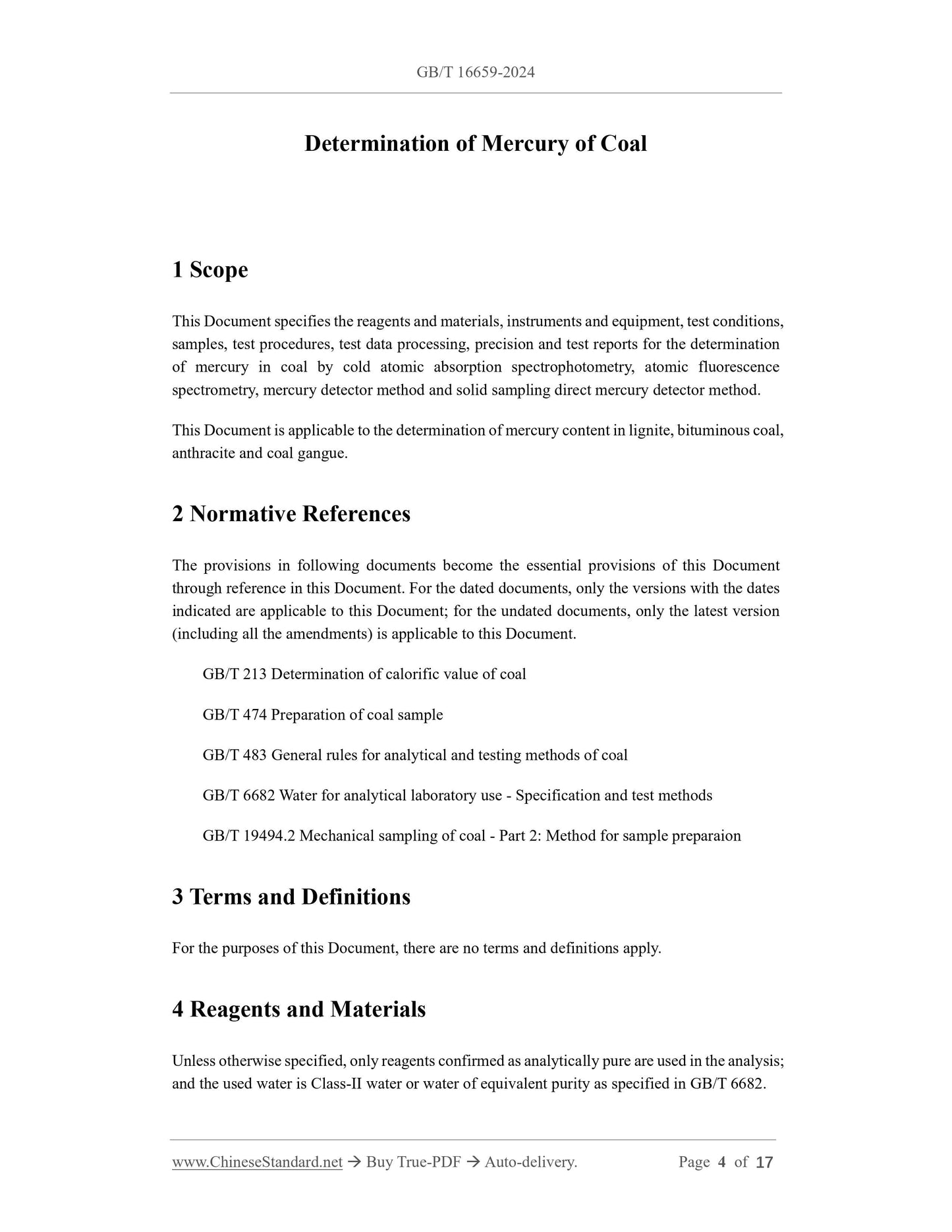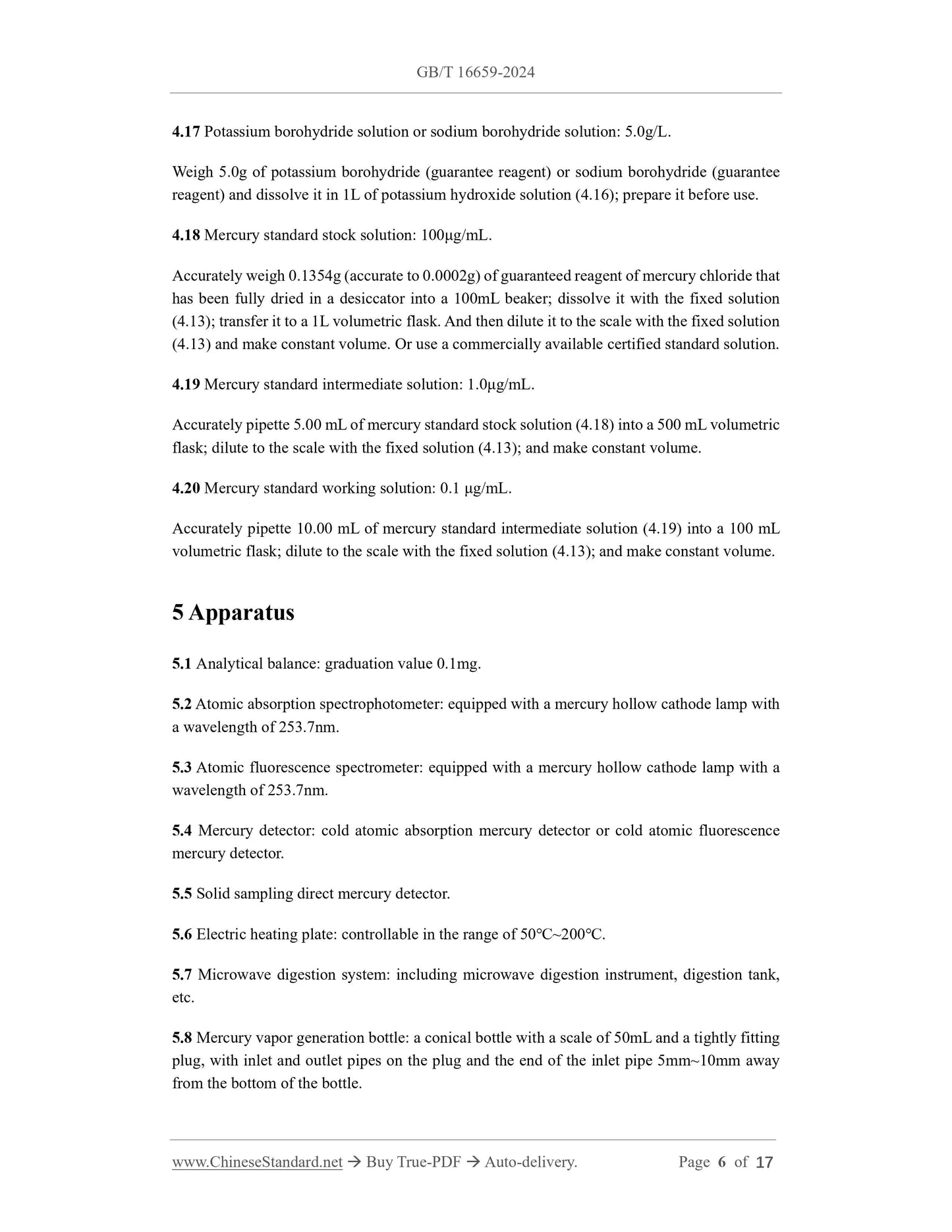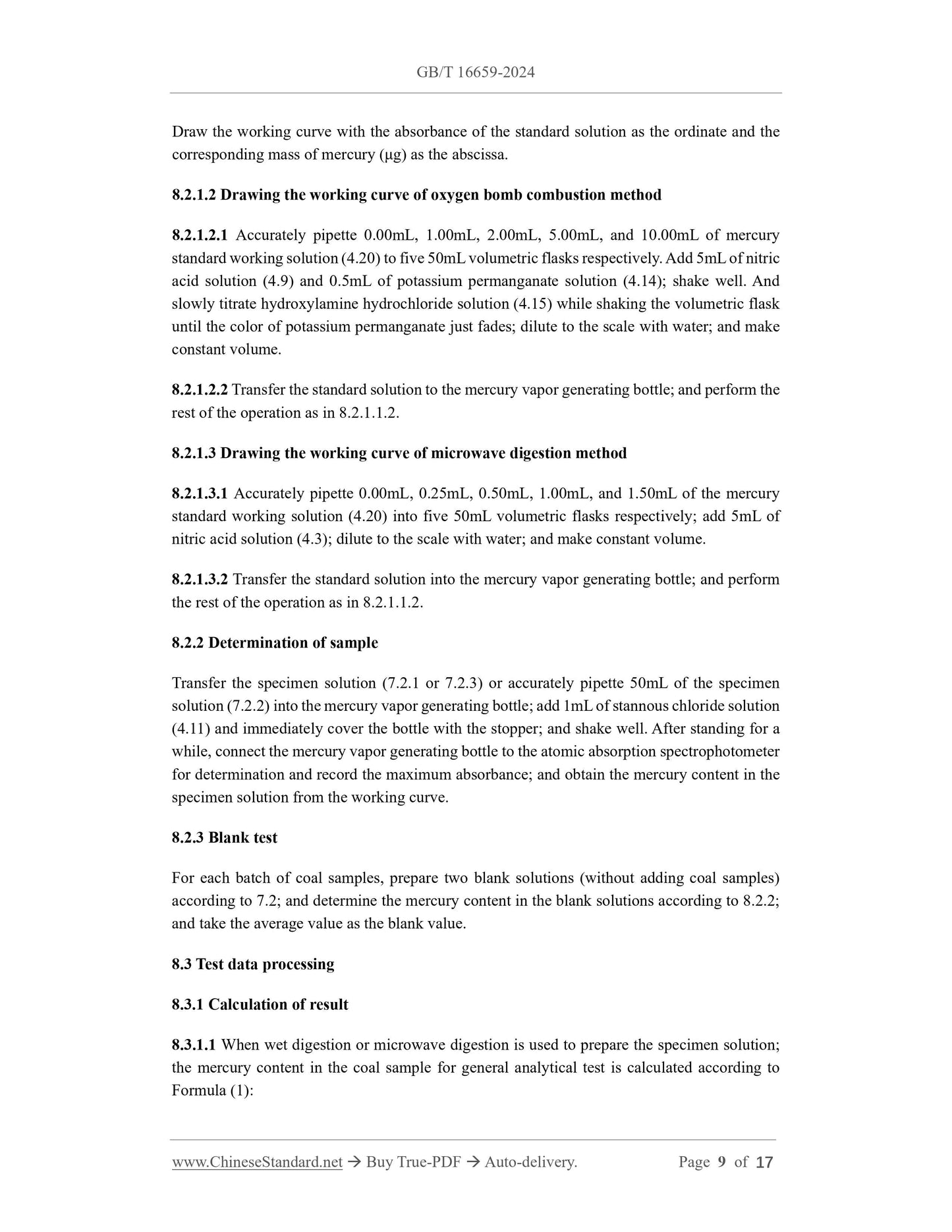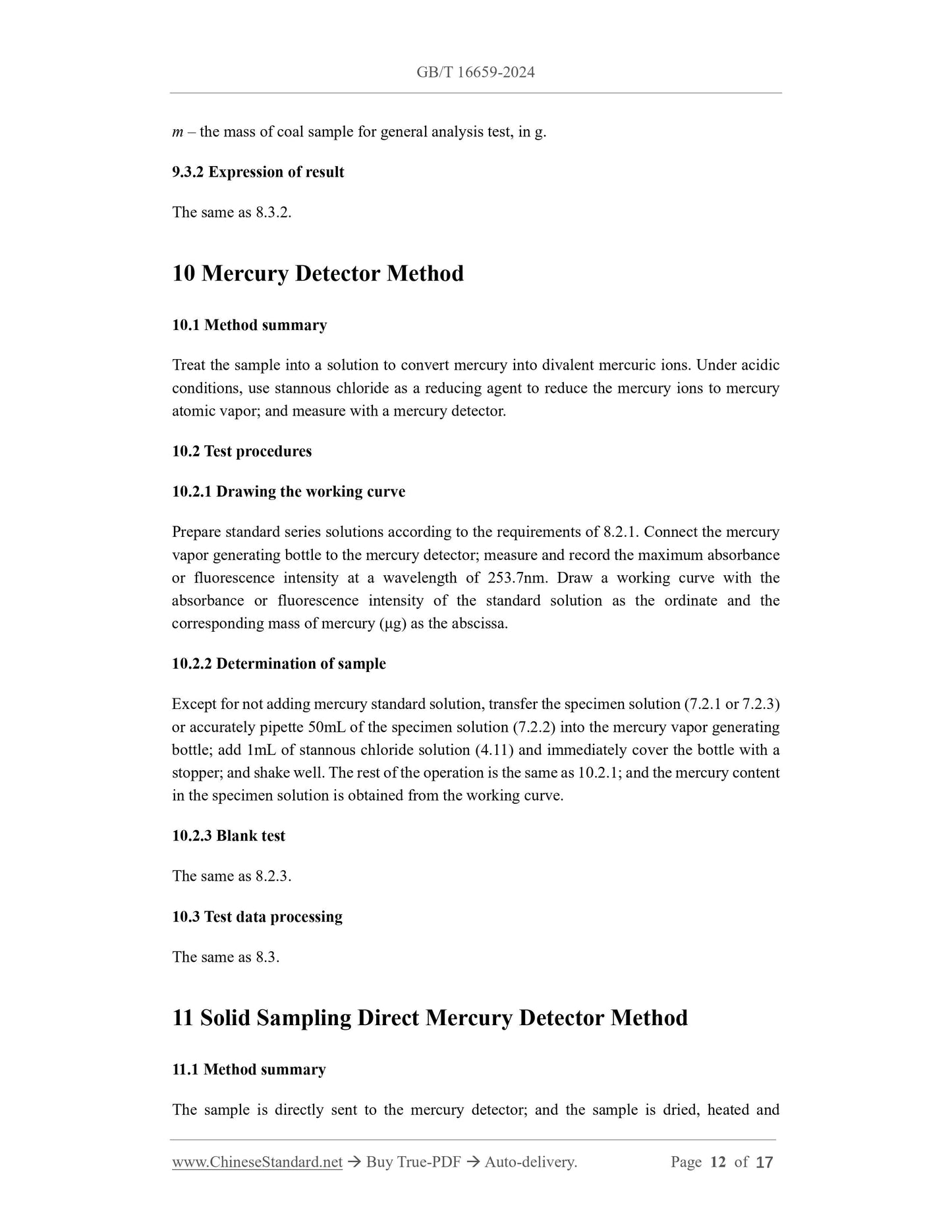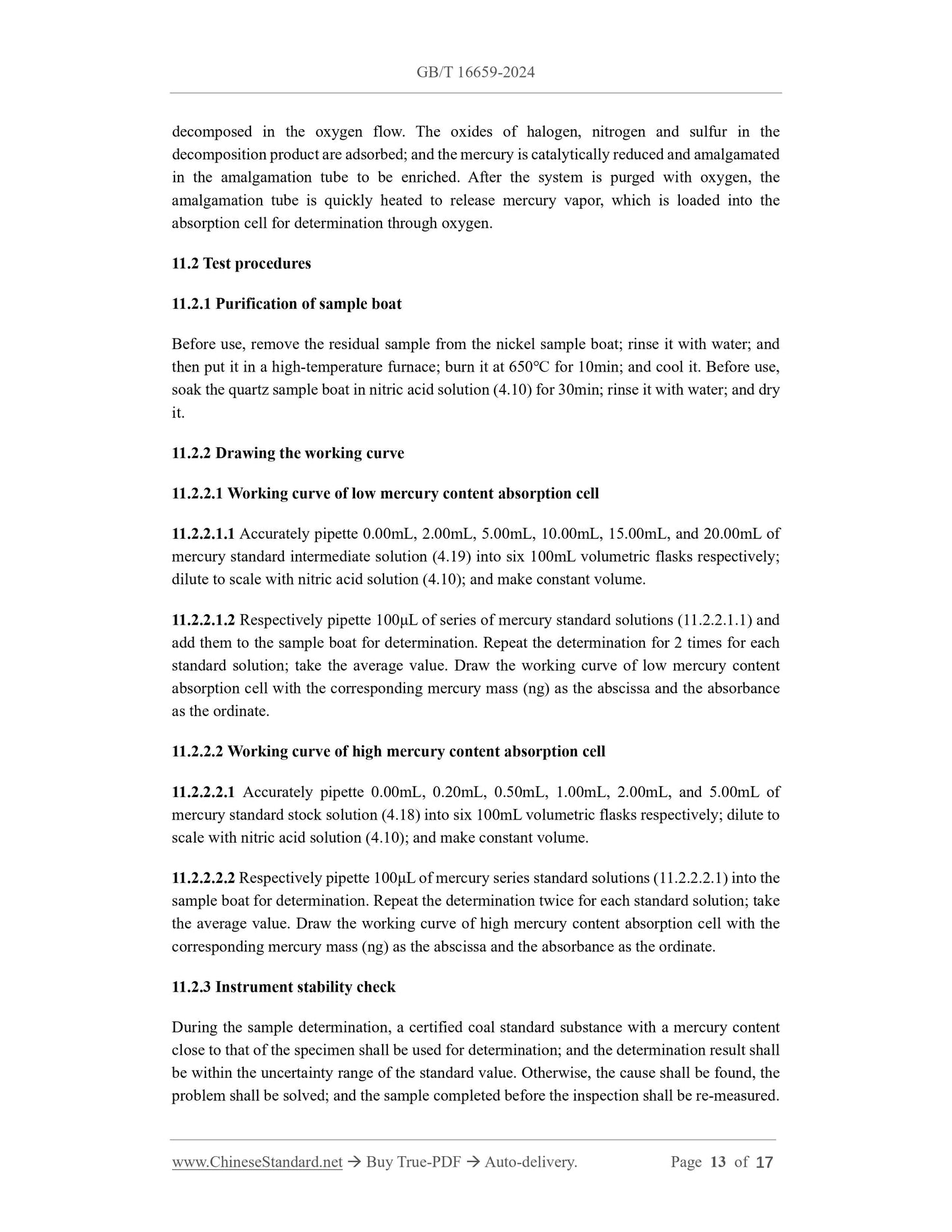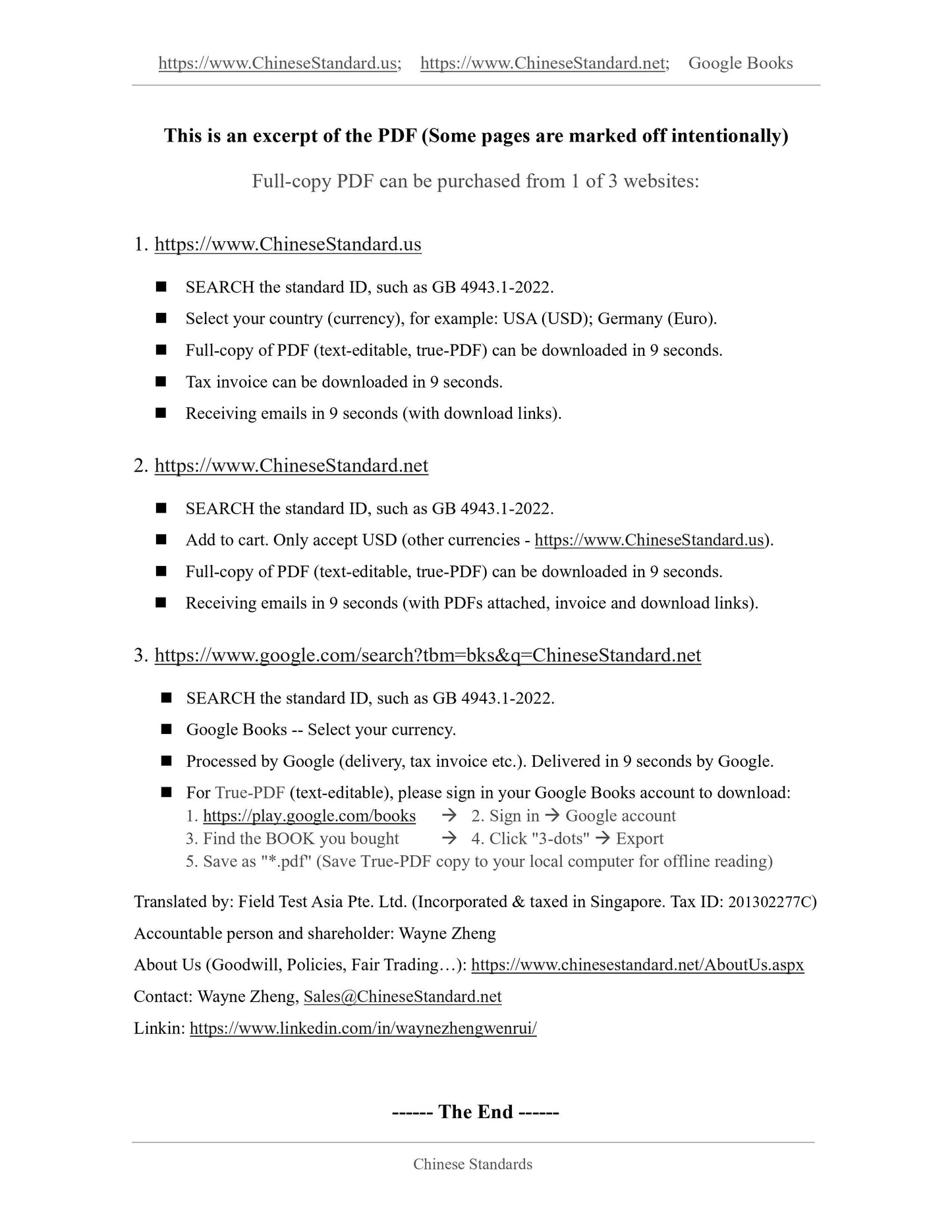1
/
of
10
www.ChineseStandard.us -- Field Test Asia Pte. Ltd.
GB/T 16659-2024 English PDF (GB/T16659-2024)
GB/T 16659-2024 English PDF (GB/T16659-2024)
Regular price
$340.00
Regular price
Sale price
$340.00
Unit price
/
per
Shipping calculated at checkout.
Couldn't load pickup availability
GB/T 16659-2024: Determination of mercury of coal
Delivery: 9 seconds. Download (and Email) true-PDF + Invoice.Get Quotation: Click GB/T 16659-2024 (Self-service in 1-minute)
Newer / historical versions: GB/T 16659-2024
Preview True-PDF
Scope
This Document specifies the reagents and materials, instruments and equipment, test conditions,samples, test procedures, test data processing, precision and test reports for the determination
of mercury in coal by cold atomic absorption spectrophotometry, atomic fluorescence
spectrometry, mercury detector method and solid sampling direct mercury detector method.
This Document is applicable to the determination of mercury content in lignite, bituminous coal,
anthracite and coal gangue.
Basic Data
| Standard ID | GB/T 16659-2024 (GB/T16659-2024) |
| Description (Translated English) | Determination of mercury of coal |
| Sector / Industry | National Standard (Recommended) |
| Classification of Chinese Standard | D21 |
| Classification of International Standard | 73.040 |
| Word Count Estimation | 18,136 |
| Date of Issue | 2024-04-25 |
| Date of Implementation | 2024-11-01 |
| Older Standard (superseded by this standard) | GB/T 16659-2008 |
| Issuing agency(ies) | State Administration for Market Regulation, China National Standardization Administration |
Share

